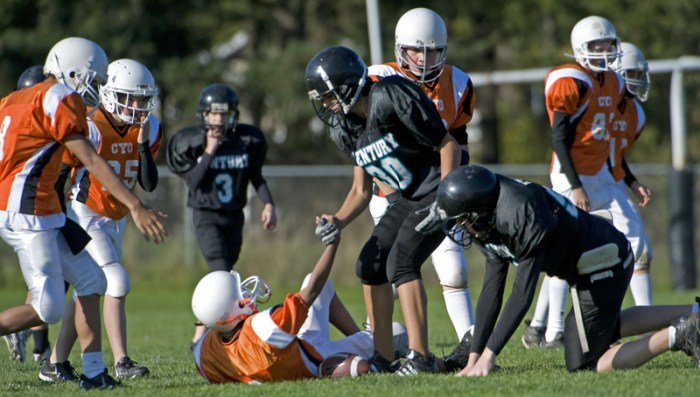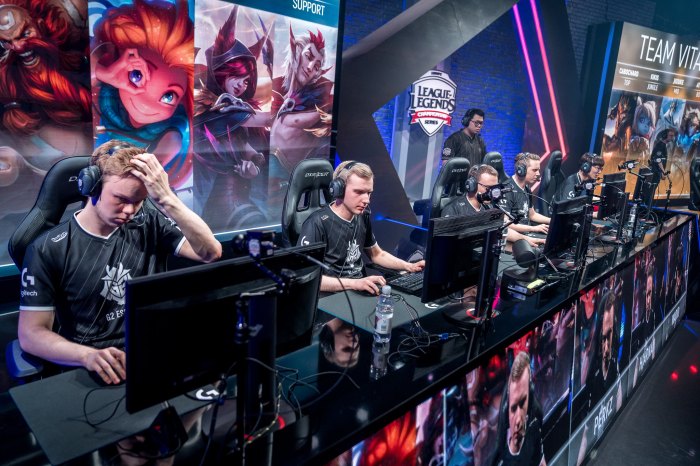E-Sportsmanship: It’s not just about winning; it’s about how you play the game, both online and off. Think of it as the unwritten rules of online respect, fair play, and building a positive community. This isn’t your grandpa’s golf course – it’s a digital battlefield where toxic behavior can ruin everyone’s fun, but good sportsmanship can create a killer gaming experience for all.
We’ll dive into what constitutes good e-sportsmanship, exploring the differences between online and offline interactions, and how communication styles can make or break a match. We’ll also look at the impact of competition, community responsibility, and the serious consequences of being a total jerk online. Get ready to level up your game – not just in skill, but in attitude.
Consequences of Poor E-Sportsmanship

So, you’ve been raging in ranked, haven’t you? We’ve all been there, but letting your frustration boil over into toxic behavior can have some serious repercussions. Poor e-sportsmanship isn’t just about being a jerk; it impacts everyone involved, from the individual player to the entire gaming community. Let’s dive into the consequences.Poor e-sportsmanship can seriously damage a player’s reputation and future opportunities.
It creates a negative gaming environment, driving away other players and harming the overall experience. This extends beyond individual matches; it impacts team dynamics, sponsorship deals, and even professional career prospects. The long-term effects can be far-reaching and detrimental.
Sanctions and Penalties for Violations
Game developers and tournament organizers implement various measures to address unsportsmanlike conduct. These range from temporary suspensions to permanent bans, depending on the severity of the offense. For example, a single instance of verbal abuse might result in a temporary mute or suspension, while repeated offenses or extremely egregious behavior, like cheating or account boosting, could lead to a permanent ban from the platform or tournament.
Professional leagues often have even stricter codes of conduct, with penalties that include fines, suspension from competition, or even termination of contracts. Think of it like getting a penalty in a real-life sport—only the consequences can be even more impactful on your online gaming career.
Impact on Individual Players
Imagine this scenario: Alex, a highly skilled player, consistently flames his teammates and engages in toxic communication during online matches. His skill might initially overshadow his poor behavior, but over time, it erodes his reputation. Teams become hesitant to draft him, sponsors pull out, and opportunities for professional advancement dwindle. His toxic behavior creates a self-fulfilling prophecy—his reputation precedes him, and even if he tries to change, the damage to his image may be irreversible.
This scenario isn’t unique; many talented players have seen their careers negatively affected by their inability to control their online behavior. The gaming community is smaller than you think, and word travels fast.
Impact on the Gaming Community, E-Sportsmanship
The impact extends beyond individual players. A toxic gaming environment drives away casual and even professional players. It discourages new players from joining the community, hindering growth and potentially impacting the overall health and longevity of the game itself. Imagine a game where every match is filled with negativity and insults – who would want to play?
This lack of a positive atmosphere leads to a decline in player base, which, in turn, can affect the game’s development and support. A thriving gaming community relies on mutual respect and positive interactions, and toxic behavior undermines that foundation.
Visual Representation of E-Sportsmanship

Visuals can powerfully convey the essence of e-sportsmanship, both positive and negative. By depicting scenarios through imagery, we can better understand and internalize the importance of respectful conduct in the competitive gaming world. These representations can serve as effective teaching tools and reminders for players at all levels.A picture is worth a thousand words, and in the context of e-sportsmanship, a well-crafted image can instantly communicate complex ideas about sportsmanship, respect, and fair play.
Effective visuals can be more impactful than lengthy explanations, creating a lasting impression on viewers.
Positive Depiction of E-Sportsmanship
Imagine a brightly lit esports arena, vibrant with the energy of a packed crowd. The scene centers on two teams, their players intensely focused but also exhibiting mutual respect. One team, having just won a particularly challenging match, is celebrating with controlled enthusiasm – high-fives, nods of acknowledgement to their opponents, and genuine smiles. Their opponents, while clearly disappointed, offer handshakes and words of congratulation, showcasing grace in defeat.
The background is filled with cheering fans holding up signs promoting positive gaming, all contributing to an atmosphere of healthy competition and mutual respect. The overall color palette is warm and inviting, emphasizing the camaraderie and shared passion for the game.
Negative Depiction of E-Sportsmanship
In contrast, consider a darker, more claustrophobic setting – a dimly lit room, perhaps a bedroom, where a single player sits hunched over their computer screen. Their face is contorted in frustration, illuminated by the harsh glow of the monitor. The screen displays a raging online chat, filled with insults and toxic language directed at the player. Empty energy drink cans and discarded food wrappers litter the desk, suggesting hours of unchecked negativity.
The player’s posture conveys isolation and despair, highlighting the detrimental effects of poor e-sportsmanship on mental wellbeing. The muted color palette emphasizes the isolating and unhealthy environment fostered by negative online interactions. This image aims to evoke empathy, portraying the negative consequences of toxic behavior on both the individual and the gaming community.
FAQ Compilation: E-Sportsmanship
What’s the difference between rage quitting and taking a break?
Rage quitting is abruptly leaving a game out of anger, often without warning. Taking a break involves pausing or exiting gracefully, communicating your intention beforehand.
How do I handle toxic players without stooping to their level?
Mute or report them. Focus on your own gameplay and don’t engage. Remember, you can’t control their behavior, only your reaction.
Is there a formal code of conduct for e-sportsmanship?
Many games and platforms have their own rules and guidelines. Generally, these emphasize respect, fair play, and avoiding harassment.
What resources are available to learn more about e-sportsmanship?
Many gaming communities and organizations offer resources. Look for guides, articles, and videos online related to positive online interactions.
